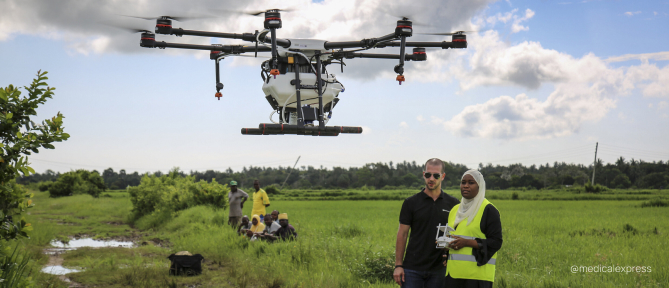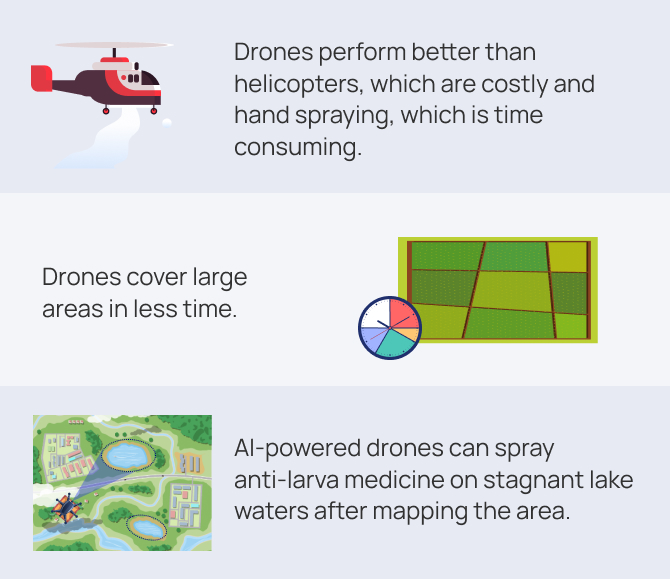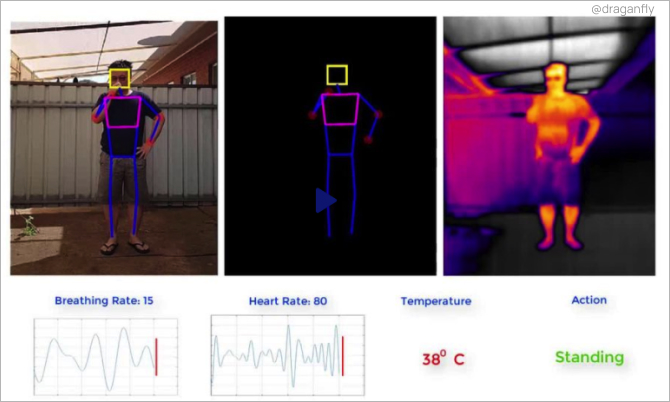Many times we have put the concept of using technology to solve our problems and make the world a better place to live in. The malaria outbreak and the Covid-19 pandemic are putting the promise of technology to the test.
Here, we explore 2 use cases that solidify the "Drones for Good" mission. For long, prevention of water-borne disease has been a challenge for developing economies. We explore how drones can prevent the spread of malaria and dengue. Also, as the world is currently grappling under the tentacles of Covid-19, we explore how drones are helping humans in their fight against the global pandemic.

Malaria is perhaps the most dangerous disease that mankind has ever known. Globally, malaria is responsible for 1-3 million (approx) deaths per year. The disease mostly claims the lives of children below 5 years and pregnant women.
Countless malaria mosquitoes breed in the rice paddies of Zanzibar, Tanzania, and they fly to the nearby villages, bite the people, and spread the disease. Controlling the mosquitoes over the huge spread of the rice paddies is difficult. While helicopters proved to be costly and hand spraying consumed a lot of time earlier, anti-malaria drones came in to fill up the gap as the situation called for easier, faster, and economical solutions. The Agras MG-1S drones were used, which can spray 10 litres of a biodegradable agent called Aquatain , a chemical that has been used to cover drinking water basins.
After a month, the results were remarkable- drone-sprayed fields, as compared to the control fields, showed significant drops in the number of mosquito larvae and pupae and more than a 90% reduction in the number of emerging adult mosquitoes.
Leveraging drone technology along with other innovations like malaria vaccines, ‘Gene Drive’ Technology, and The Malaria Matchbox - to eradicate malaria is part of a program by the Zanzibar government, which is looking forward to eliminating malaria by 2030.

In India, stagnant water that breeds mosquitoes and other water-borne ailments are the quintessential problems. The country carries a heavy burden of vector-borne diseases like dengue, malaria, and chikungunya. An easy way to tackle the situation is to clean the water bodies periodically. Armed with AI, drone technology, and the Internet of Things (IoT), Hyderabad-based Marut Drones has come up with easy solutions to tackle the mosquito menace.
What started as a mission to address a personal need for Prem Kumar Vislawath, made him think of using drones for public health service – the AI-powered drones efficiently sprayed anti-larva medicine on lake waters after carefully mapping the area. Thus, an automated process was discovered that could cover up to 25 acres, without any human contact. Earlier, the municipal staff struggled to spray anti-larval medicines on the lake edges without any facility to access the larger mid-portion of the lakes. Also, the thick water hyacinth proved to be a deterrent. Drones came as an easy solution as they could carry up to 10 litres of disinfectant and cover about 20 kilometres in very little time. Thus, the problem of accessibility was rectified using drones and as a result, the majority of mosquito growth was checked, just in time.
Drones are playing a key role in the current pandemic situation. As temperature checks have become mandatory everywhere, ‘pandemic drones’ are now being used in many places to detect Covid symptoms and monitor social distancing, to keep the community safe. These drones can monitor body temperature, heart rate, and social distancing. The University of South Australia along with Draganfly, a Canadian drone manufacturer company has developed software that can monitor people’s health, including their sneezes and tracking their fever. The drones can measure heart rate within 8 metres and detect a cough from 15-20 metres away.

In Malaysia's Terengganu , police are using drones to detect individuals with high body temperature at public areas as the country is undergoing a third nationwide lockdown. The drones can detect body temperatures from 20m above the ground. Once they detect fever, they emit a red light to alert the enforcement personnel, who rushes to the location to identify the symptomatic person. Thus, the fever tracking drones are of immense help to the enforcement personnel during the Covid-19 induced lockdown phase.
New Delhi-based Indian Robotics Solution, has come up with 3 Corona combat drones during the coronavirus situation - Thermal Corona Combat Drone that can check the elevated body temperature of individuals, Thermal Corona Combat Headgear, a wearable helmet that can provide live imagery of the elevated body temperature of people in crowded places, and Corona Combat Drone which is used for aerial sanitization.
Leveraging technology in uncertain times can help to rekindle hope. While there is ample scope to leverage drone technology, strong rules and regulations should be there to prevent misuse of the technology. As the demand for drones grows rapidly, chances are we will see an entire ecosystem march ahead to innovate, come what may – pandemic or not. We can choose to help speed up our path toward an autonomous future by embracing the normalization of drones - after all, they are one of the most prominent machines to operate in such close proximity to us. A promising future lies ahead...